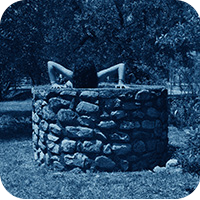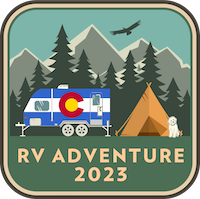Beyond shuffle
Had a thought.
Been listening to this on my iPod for a while (it is three hours long). There are sections in it that sound like the interference headphones and speakers get from incoming mobile signals. At first I thought it was my phone, but it isn’t. It’s in the recording, sorta like a watermark. Since it is a live recording perhaps it was picked up during the show.
It got me thinking about randomness in music recordings. Artists have been talking about this for decades, trying to approximate the variability of a live performance in a static recording. Basically it isn’t possible, though that which does exist tends towards empowering the listener to muck with the tracks. But what about merely giving the artist the ability to vary the song on a given listen?
You’d not need a new audio format, it seems to me. What about using the comments metadata section in an MP3 (or AAC, whatever) to include an executable chunk of code that could manipulate the actual audio stream? Obviously your player would need a plug-in of some sort to run the code, but that’s easy with the extensibility of most apps these days.
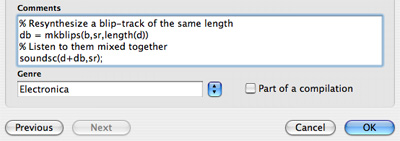
How would it work? Well, the song would play normally. The plug-in would look for comments and would be alerted by some string that announced that the contents were executable. If the plug-in were sophisticated enough it could do anything from simple effects (flanging, phasing, echoing) to actual audio insertions and overlays. You could imagine an online component that would go out and pre-fetch snippets or sounds that could be layered into the pre-recorded track. The key would be variability. It would not happen every time — or rather it would not have to happen every time. If it did, why not pre-record it? The idea is akin to apps today that live a dual existence on one’s machine and also, in part, online. If you didn’t have the plug-in the song would play normally.
It wouldn’t substitute for an artist’s creative freedom during a live show, but it would reinsert variability into the act of playback — something that’s been a part of the musical experience far longer than the era of recorded sound that we live in.
Update: Nick Nice, the artist behind the mix linked above, contacted me. He confirmed that the noise was in fact from his phone being too close to the mixer when an SMS was coming in.
Set trimmers to kill
Buzzed my hair down to the scalp today. Up yours male pattern baldness!

Update: Best comments on new buzz:
“Did you get lice in Russia?”
“Overclocked brains require better heatsinks, right?”
“Your back hair is now officially longer than your head hair.”
Socio
Been thinking a lot about social networks lately. This is mostly because I am part of a team building one. But is just as likely due to Facebook’s amazing proliferation lately.
Figured I’d collect all my nets in one place. Because, you know, I need more friends. (* means you gotta be a part of the network to see the profile.)
Cork’d
del.icio.us
Dopplr* (Closed beta, unfortunately. I have a few invites left if you are interested.)
Facebook*
Flickr
Last.fm
Library Thing
LinkedIn
Twitter (And my car’s Twitter page.)
And let us not forget Isolatr, the anti-social network. Helping you find where other people aren’t.
Better than “Information Superhighway”, I suppose
Spotted at the St. Petersburg airport. I’d like to say this ad is from 1999, when the term cyberspace at least had a degree of currency. Alas, no. It is new. Someone somewhere thought this was a good idea. Cyberspace. Sheesh! The term was awful even when it didn’t sound dated.
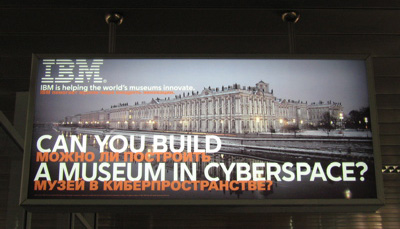
Sidenote: St. P’s airport is called Pulkovo II. Like a sequel. Revenge of the Airport.
How to know you’re in trouble for the web demo you’re about to give
Your co-presenter says the following things during set-up. Let’s call this person a she. Let’s call her Pauline. Let’s also call her my boss.
- In establishing a wireless network connection she said “Oh, we’re not connected.” The status said connected 100% and it clearly was. I looked at her funny. She said “See, the little lines aren’t making it all the way across.”
That’s eye-candy, Pauline. An animation. To make users feel warm inside. It means nothing. But that brick wall there, that really does exist. Best way to keep out viruses is to run your connection straight through solid brick. Kills ’em right off, I tell you.
- I ask her to find an empty spot on her desktop and drop a file there. She responds “There are no empty spaces.” Wha? Looking over I see she’s right. Not a single square of available space. I think everything she’s ever downloaded is crammed onto this single screen. Half of which are the executable installs for the very program icons that follow them. And, since Windows often uses the same icon for installs and for the program itself she reinstalls apps about as often as she means to run them.
- “Wow! How did you just switch programs that fast?” Um, I clicked on the other window. (No Alt-Tab sorcery here folks!) “I didn’t know you could do that,“ she says. ”If I need to go from one program to another I just close the window and open a new one.“ Hello, MS-DOS!
I’m doomed.
This is what happens back at home when I travel
The inmates run the asylum (and my Last.fm account, apparently).
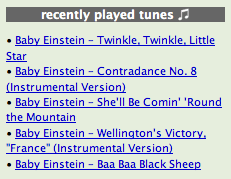
Enough already
I’m sure there are some readers sick of the baseball and genealogy posts. Suffice to say that my blissful month of no travel (OK, not much travel — I’m in NYC right now) is coming to an end. This means new posts on things like Russia when it don’t go dark, travels with Oprah Winfrey, certainly a trip or two to China, and a few other new destinations.
My loss, your gain.






